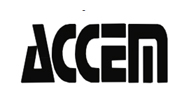
Shaking ends; other hazards begin
Ada City/County Emergency Management
October is often associated with scary things. It is also Earthquake Awareness Month in Idaho. Earthquakes can be very scary, but knowing what to expect helps people better plan and prepare for the aftermath of a large quake. Knowledge can help overcome fear; preparing creates confidence and improves personal safety.
 A major earthquake wreaks havoc on a community. The most common hazard to occur post-quake is fire. However, fire departments will be responding to structural collapses, hazardous material spills and medical emergencies in addition to the fire ignitions created by the event. All of this may be complicated by restricted or reduced water supplies, diminished communications and blocked transportation routes.
A major earthquake wreaks havoc on a community. The most common hazard to occur post-quake is fire. However, fire departments will be responding to structural collapses, hazardous material spills and medical emergencies in addition to the fire ignitions created by the event. All of this may be complicated by restricted or reduced water supplies, diminished communications and blocked transportation routes.
What dangers lurk at home post-quake? Appliances, furniture or other household items may shift, fall or spill.
-
Gas, chemical or electrical hazards may be present.
-
Pools of water or even the outside of appliances may be electrically charged.
-
Leaking gas lines or damaged/leaking propane cylinders could explode or ignite.
There are some things that need to be identified, understood and put in place to be earthquake ready.
-
Locate all utilities that provide service to the home. Learn how and when to turn them on and off safely.
-
Keep at least one Class A/B/C fire extinguisher on each floor of the home. Learn how to use it.
Plan and practice home evacuation with all members of the family, including pets. -
Have and maintain smoke and carbon monoxide detectors in all appropriate areas of the home.
-
Use metal straps to secure the hot water heater to the wood studs of the nearest wall.
-
Install flexible connectors on all gas appliances.
-
The most important thing people can do for themselves and their family is to safe. Decisions need to be made with personal safety being the highest priority.
An injured person may not be able to help himself/herself or others. Sometimes the safest thing to do is evacuate a damaged building.
If there is a small fire (size of a trash can or smaller), it may be safe to put it out with a fire extinguisher. Awareness of the area and situation is essential. Never approach a fire unless it is certain there is a clear exit away from the fire.
Use a buddy system, conditions can change rapidly. Having someone available to watch the surroundings while the other is extinguishing fire or shutting off utilities can help keep everyone safer.
Those are the breaks
The old Scottish proverb “Better bend than break” is very true of pipe systems during an earthquake. Water, sewer and natural gas are all connected to the home by pipes and most likely rigid pipe at some point of the system.
Wiring also can be affected by ground movement. This is where some of the post-quake hazards may arise. Breaks inside walls can be especially dangerous. Sparking wires can meet leaking gas pipes or running water and not be readily visible.
If you smell or hear a gas leak, evacuate the house immediately. Leave the windows and doors open. Shutting down damaged utilities may help avert further property damage or injury. If you suspect that there has been damage to any of these services, it is essential to have them checked and repaired by a professional before moving back into the home.
The Great Idaho Shakeout
Surviving the actual earthquake is always the first step. The “Drop, Cover and Hold” technique is still the most recommended methodology for personal safety during an event. Practice makes perfect and the Great Idaho Shakeout is an opportunity to practice with thousands of other Idahoans simultaneously. To participate or for more earthquake preparedness information go to: http://shakeout.org/idaho/
.
Published 10-4-13